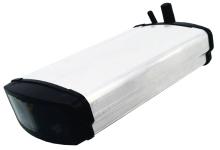
The Pedestrian Split Cycle Offset Optimisation Technique, or “Pedestrian SCOOT”, currently being developed by TRL Software experts, uses state-of-the-art video camera technology to detect how many people are waiting to cross the road. It then facilitates the automatic adjustment of traffic signals to extend the green pedestrian invitation to cross phase when necessary.
Also in development is a “call cancel” technology which cancels the pedestrian crossing phase if a pedestrian has both pushed the crossing button and crossed before the light goes green, or has walked away.
In another ground-breaking innovation, TRL Software is working on a project, part funded by The European Space Agency through the ARTES IAP 20 (Advanced Research in Telecommunications Integrated Applications Programme 20). uTraq will take Satellite Asset Data (weather, emissions, GNSS) and use them in a computational model, integrated with traffic control to provide a fully environmental policy driven traffic management system.
It will break new ground by bringing Air Quality and Weather Monitoring Systems capability, Modelling and Traffic Forecasting tools and Adaptive Traffic Management Systems into one single user-centric, intelligent, integrated solution.
Other product announcements during Intertraffic will be a cut-down version of Arcady for the North American market, and TRL will have Transyt models from London, Leicester, Cannes, Perth, and Atlanta on its stand.
<%$Linker:








